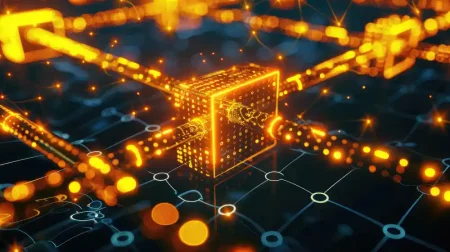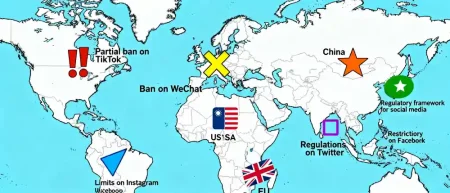When UPI died, India held its breath, writes Satyen K. Bordoloi as he digs into the inside story of a nation held hostage by a QR code.
Back in the early 2000s, a young, over-caffeinated version of me worked at a startup that dreamed of letting you buy cigarettes with a Nokia 3310. Our genius plan: link your phone to your bank account via SMS. Back then, this felt as revolutionary as inventing fire for the digital realm. Of course, smartphones with internet would become the norm with the iPhone since 2007 and crash our innovation party.
But fast-forward to 2016, and you’ll find that India pulls one better than even iPhone could. UPI (Unified Payments Interface) drops into India’s digital landscape, and that dream of buying anything—from a ₹5 samosa to a ₹50,000 iPhone—within seconds, became a reality for over a billion Indians. It takes seconds, uses no SMS and the link to the bank isn’t based on prayers either. Just a happy tick on your screen and money flows from one account to another. Sasta! Sundar! Tikau!
For almost a decade since, UPI has become India’s digital lifeline. But here’s the problem with that: when UPI sneezes, India catches a cold. Or as it happened in April 2025, two colds.
India’s Nobel Prize Drought vs. UPI’s Rockstar Status
Back in 2005, all of us at the startup felt ourselves to be the bhatijas of Captain Kirk, boldly going where no Indian had gone before. That’s because let’s face it, India is called the back office of the world for a reason. From BPOs to Hollywood VFX, India is to the digital landscape of the Global North, what China is to their manufacturing. Just take this simple fact: since India’s independence, except for Kailash Satyarthi in 2014, no Indian working in India has won a Nobel Prize. The strike rate in other scientific prizes is no different.
The same goes for Indian businesses. While those of the West, the Musk and Bezos’ of the world, are busy getting rich on innovation, those in India are known for exactly the opposite: copying others’ innovations, stealing others’ businesses, and displaying wealth obscenely during marriage. Yet, amidst the innovation draught that is India, there is one even Elon Musk is jealous of: UPI, the DDLJ of India’s tech innovations—eternally iconic.
We’re the global champs of instant payments, gobbling up 49% of all real-time transactions worldwide. Let that sink in: 500 million transactions daily, worth over ₹30,000 crores. In 2023 alone, UPI moved ₹182 lakh crore ($2.2 trillion).
And what is most fascinating is how UPI became the people’s app. Unlike Silicon Valley’s flashy apps, UPI thrived in India’s chaos. It didn’t just replace wallets; in a nation divided along multiple fault lines, it became the great equalizer. The same type of QR code adorns a billionaire’s showroom and a rickshaw driver’s weathered phone. It’s democracy in pixels.
So, when UPI crashed twice in April 2025, it wasn’t just a glitch. It was a warning to this nation: stave off chaos before the next disastrous sequel.

April 2025: The Day India’s Wallets Went Phatt
It sounds like finding patient zero in a pandemic via contact tracing. In a way, it is. The first UPI outage was recorded on April 2. Banks blamed it on “latency issues” post-financial year closing just 2 days prior. Maybe that was a glitch, is a thought that was proven wrong just 10 days later on April 12, when at 11:50 AM, UPI’s heartbeat flatlined. By 1 PM, the number of complaints on the outage monitoring website Downdetector peaked with over 2,300 complaints. Error messages like “Recipient’s bank network is down. You’re not able to make payment to your recipient’s bank. Please try paying to a different bank account” flashed harder on people’s phones than social media hashtags.
Chaos ensued. People who were not carrying cash were stuck. A diabetic user couldn’t buy insulin. Another was stuck with the grocer and one in the middle of the road, waiting for the system to work to pay. An assuaging tweet from NPCI (National Payments Corporation of India) with the phrases “Partial UPI transaction declines” and “We are working to resolve the issue” sparked rage. One user clapped back: “Nothing “partial” about this. The failure is complete and across the board!” Some chimed in with their conspiracy theory, asking if this double failure was a ploy by NPCI to start charging for UPI transactions.

Why Cashless Zones Are a Double-Edged Sword
That same outage weekend, I was at PVR Dynamix Mall, Mumbai to watch a film. The place touts itself a 100% cashless zone. No cash at ticket counters. No cash for popcorn. Even on Mumbai’s roads I have to carry exact chutta because Autowallahs, once kings of loose change, now snap, “Paytm karo!”
This isn’t just a Mumbai problem. From Jaipur’s kulfi carts to Kerala’s fish markets, “UPI only” signs are everywhere. From temples with PhonePe for donations, to viral beggars with QR codes strapped to their necks, we are no longer the nation of snakes and monkeys: we are QR coded all the way. 70% of India’s digital payments ride on UPI. Hence, when it crashes, we are left feeling stranded like Tom Hanks in Cast Away—except Wilson is a QR code.
The Irony: UPI’s Success Is Its Biggest Threat
The reason why 350 million users love UPI is because it’s free. No fees equal no fuss. But here’s the catch NPCI has been grappling with for years: no fees also equal no funds for upgrades. NPCI’s servers are like a Mumbai local train at rush hour—saddled with “super dense crush load” and one spark away from chaos.
Imagine building a highway for 100 cars on which 10,000 ply, day after day, nonstop. That’s UPI’s infrastructure today. The government wants to add 300 million more users, bringing UPI’s overall user base close to Europe’s population, and take UPI global. India has also been touting UPI as a tool across many other nations, particularly those in Africa. Noble? Yes. Risky? Absolutely.
Solutions: How to Stop India From Turning Into a Meme
The good news is that UPI isn’t doomed. But fixing it would require the kind of hustle that made it a success in the first place.
First, backup systems. Think of having a digital chai tapri on every corner. If Mumbai’s servers crash, Kolkata’s should kick in seamlessly. Decentralised networks inspired by blockchain’s resilience could prevent single points of failure. And since India also wants to flex its AI muscles, why not use it to predict traffic spikes? After all, if Netflix can smoothly buffer Adolescence to hundreds of millions of homes at the same time, surely UPI can handle Diwali sales.
Second, though UPI’s “no fees” model is the reason for its success, it seems unsustainable. A tiny fee for businesses—think 0.1% on transactions above, say ₹ 10,000—could fund better infrastructure for the payment system. Your neighbourhood Kirana store will still use UPI for free. But the Amazon and Big Bazaars of India? Surely, they can spare a few rupees.
Third, hybrid payments. Spain fines shops that refuse cash. So do Belgium, China, Denmark, France, Ireland, the Netherlands, Norway, and Slovakia, among others. Though India has been pushing for digital payments since demonetization, we do need systems in place to remind people that QR codes are great, but cash is still king. Mobile wallets, cards, and good old cash should all coexist.
UPI isn’t just a service. It’s a digital revolution—a story of democracy where chaiwalas and CEOs use the same QR code. But revolutions need guardians. So, NPCI, if you’re reading this: fix its cracks. Innovate like it’s 2003 and we’re still dreaming of buying cigarettes via SMS. Because today, UPI isn’t just India’s pride—it’s our digital spine. Break it, and we’ll all collapse. And to the users who couldn’t buy insulin, or got stuck in the middle of something, apologise. You have to do better if India has to do its best.
In case you missed:
- OpenAI, Google, Microsoft: Why are AI Giants Suddenly Giving India Free AI Subscriptions?
- Digital Siachen: Why India’s War With Pakistan Could Begin on Your Smartphone
- GoI afraid of using foreign GenAI in absence of Indian ones? Here’s how they still can
- The Verification Apocalypse: How Google’s Nano Banana is Rendering Our Identity Systems Obsolete
- Digital Siachen: How India’s Cyber Warriors Thwarted Pakistan’s 1.5 Million Cyber Onslaught
- How India Can Effectively Fight Trump’s Tariffs With AI
- To Be or Not to Be Polite With AI? Answer: It’s Complicated (& Hilarious)
- AI’s Looming Catastrophe: Why Even Its Creators Can’t Control What They’re Building
- Greatest irony of the AI age: Humans being increasingly hired to clean AI slop
- A Howl Heard Worldwide: Scientific Debate Roars Over an Extinct Wolf’s Return










